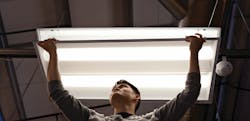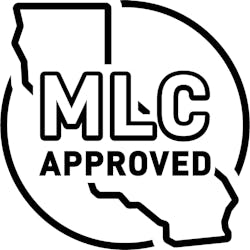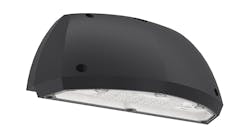As LEDs Magazine reported back in 2017, a group consisting of the University of California system, the University of California–Davis California Lighting Technology Center (CLTC), and the California State Department of General Services announced its “Million Lamp Challenge,” in which the collaborative first sought bids to supply 1 million high-quality LED retrofit lamps. The original intent was to supply the University of California, California State University (CSU) and community college system, as well as state agencies with lamps that complied with the Voluntary California Quality Light-Emitting Diode (LED) Lamp Specification 2.0 published by the California Energy Commission. In 2018, the program would be extended to faculty, staff, students, and alumni of participating organizations to purchase the incentivized LED lamps. The lamps included were general-service A-lamps and small-diameter directional lamps.
Initially, that quality standard was voluntary, but when it became aligned with the CEC’s finalized Title 20 Appliance Efficiency Regulations in 2016, differences of opinion arose within the LED and solid-state lighting (SSL) community as to whether the demands of the standard were focusing on the necessary metrics and a balance of efficacy and color quality. The concerns pared down to whether the quality specifications took into consideration the efficacy penalty of color characterization by CRI, and questioned whether the enactment would decrease potential energy cost savings and ultimately the reduced carbon emissions goal driving incentivization of such ubiquitous products. Read the links above to get a sense of the range of well-supported industry perspectives.
Fast-forward to 2021 and the program participants have now propelled what’s known as the Million LED Challenge – Phase 2 into LED linear lighting replacements. The UC Procurement department just announced two new contracted agreements to supply a selection of linear LED lamps (also known as TLEDs), retrofit kits, and LED luminaires to replace the installed base of fluorescent tubes throughout the partner institutions.
This week, LEDs Magazine spoke with Michael Siminovitch, Arthur H. Rosenfeld Chair in Energy Efficiency and director of the CLTC at UC Davis. Siminovitch is deeply involved with the Million LED Challenge and lighting research through CLTC. He also happens to be a co-author on one of the linked articles regarding lamps quality regulations, and has recently published through the CLTC website an article that outlines why California needs a quality specification for linear LED lamps.
Curiosity piqued, we of course wanted to understand the synergies between the development of the Million LED Challenge for linear lamps and the quality specification proposed in the article. But first we had to ask, what did the team learn from the original Million Lamp Challenge that could be applied to the new linear LED lamps program?
“Basically, with the Million Lamp Challenge, we brought that up originally to feed into sort of broader promulgation, codes and standards, availability, all utility programs, etc.,” explained Siminovitch. “And [the response] was, basically, ‘Well, we can’t do this because this stuff doesn’t exist,” he said, clarifying that the university system and state participants were concerned that quality and cost-effective LED retrofit lamps products were not as widely accessible as they ought to be. “So [they told me], ‘You’re going to have to convince your friends [in the industry] to go make this stuff before we start incentivizing it.’”
Siminovitch noted that through the framework of the Million Lightbulb Challenge program, the university partners, the CLTC, and its affiliates determined what benchmarks the procured LED lamps needed to meet in order to educate the public on lamp specifications, motivate participation in the program, and deliver satisfactory outcomes. “Getting universities and community colleges and government buildings to work together is a difficult technical challenge, and so we did eventually get [the program outlined] and it worked,” he said.
Still, “We got the technology coming to the table, and utility programs, and then the 2016, 2017, 2019 color standard — California sort of took over on that,” he added, which brought updated color quality standards into play for the lamp procurement. The Million Lamp Challenge helped to navigate the public through the lamps transition, Siminovitch noted. “You can’t buy a bad lamp in California,” he observed with a smile.
“At the same time [as the university requested the program enhancement], I’m getting all kinds of pressure from schools and universities where retrofits are going badly,” Siminovitch said. “Stuff is failing, doesn’t look great, you name it. So I went to the Energy Commission and I said, ‘Look, there’s great pressure to do stuff, but it turns out that we don’t have great technology,’ so they said, ‘We’ll take a look at it.’”
Siminovitch continued, “And yes, indeed, the technologies that were going broadly into public buildings were not great — low quality, low efficiency, that poor optics, you know, of course poor color, interoperability issues.”
So how did these experiences lead the Million LED Challenge partners to evaluate and specify the linear products listed in the procurement announcement?
Siminovitch initially objected to the proposal for TLEDs to be included in the program but understood that “you can’t stem the tide on that” due to cost pressures and maintenance concerns in some facilities. However, the characteristics of UL Type A and Type B TLEDs need to be understood fully for the individual installation scenario. Refer back to Siminovitch’s CLTC article for a concise explanation of the advantages and disadvantages of TLED types. Performance and safety risks must be assessed thoroughly due to interoperability issues in Type A lamps with commonly installed ballasts, and mains electrical voltage with Type B present at the fixture lamp holders.
“Of course, we’re trying to navigate towards [retrofit] kits; with kits we get actually improved optics and also longevity,” Siminovitch admitted. Regardless, “I said we ought to develop a quality spec which can eventually evolve into utility programs and a standard for California. But let me use the public buildings purview — the universities, the colleges, the government buildings — as the draw for doing a large public solicitation.”
When it came down to developing specifications for the linear LED lamps, he said, “You need something that’s practical and it’s not going to be hugely expensive, but something that meets the efficiency, the controls, the color quality…You know, just the product quality.”
Beyond the culling of initial submissions for pricing, Siminovitch explained, the products needed to be deliverable and manufacturers must provide support, while sticking to producing TLEDs, kits with integrated LEDs and drivers contained in a plastic and metal housing (a modular form factor), or a luminaire that can be mounted to the T-bar ceiling. “Most of the ‘action’ is going to be in the TLEDs and the kits,” he said, and decisions may come down to the cost differential between TLEDs and the kits. “But there are places for TLEDs, a good-quality TLED… Say, if you’ve got a pendant fixture, an expensive indirect fixture.” As Siminovitch elaborated, “We actually put in that the quality specification needed to have a much wider distribution, to give volumetric brightness to an existing fixture.”
We concluded our conversation with the prospects of improving the retrofit experience across a range of commercial, educational, and governmental buildings, and how the SSL industry can rise to the challenge, instead of enabling commoditization.
“At the end of the day, [people] really do want quality product… And if you ask for it, and give the industry time to respond, the cost stuff… once you look at installation and shipping and ordering and all the transactional costs — the cost differential here is insignificant,” Siminovitch explained. “Then when you amortize that over 5 to 10 years, you can’t even measure it. So why not buy something that’s good?” The conclusion to be drawn is that quantitative analysis of fixed costs versus transactional costs must replace assumptions that accepting lower-quality product is necessary to meet budget objectives on large-scale projects.
California regulations, code, and policies have often led the way for updates across the country especially when it comes to energy efficiency and environmental standards. It will be interesting to see how the Million LED Challenge proceeds, along with the potential evolution of the program’s product specifications into standards for commercially-available SSL products.
Need more information?
Visit the Million LED Challenge website for resources and purchasing information
Find additional R&D updates and energy efficiency publications on the CLTC website
For up-to-the-minute LED and SSL updates, why not follow us on Twitter? You’ll find curated content and commentary, as well as information on industry events, webcasts, and surveys on our LinkedIn Company Page and our Facebook page.








